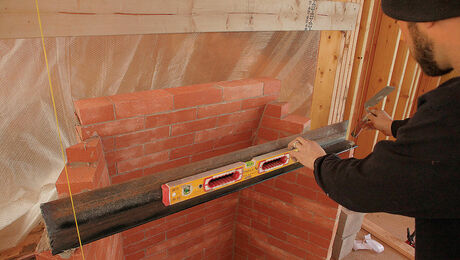diagonal door braces
I have noticed on many occasions that when a door (like a barn, shed, etc) is shown the cross brace runs from the top hinge side to the oposite diagonal corner. The door that “Norm” built for his garden shed was done this way. I would think that there would be less chance of the door sagging if it was done the opposite way, from the top edge opposite thehinge down to the bottom hinge side. Am I correct or am I missing something.



















Replies
It works the same either way.
Solar & Super-Insulated Healthy Homes
It works both ways but not as efficiently. if the diagonal is low at the hinge side, it relies on the wood in compression to keep the gate from sagging. Placed the other way it relies on good nailing to secure the member in tension.
If you were to use wire and turnbuckles instead the opposite would be true.
It works both ways but not as efficiently.
If you were to use wire and turnbuckles instead the opposite would be true.
I'll beg to differ. Wire works only in tension. Wood works equally well in either compression or tension and in either case it relies on proper fastening.
Riversong HouseWright
Design * * Build * * Renovate * * ConsultSolar & Super-Insulated Healthy Homes
Wood is extremely strong in tension, but that's not the problem. As with all wood members in tension it is getting hold of the ends that is difficult. Difficult enough that tables attempting to measure wood's tensile strength usually include a caveat to this effect.
A simple gate with the diagonal in compression can be let in to the top and bottom pieces without relying on fastenings. Run the diagonal the other way and you have two tensile connections to deal with.
Look at pictures of traditional gates - say English Lychgates. The brace is always running up from the hinge side.
You are talking about wood braces, they often go the opposite of a cable. With a wood brace, you are holding the loose end up, with a cable you are pulling the loose end up. You don't get compression with a cable, you get tension.Beat it to fit / Paint it to match
Exactly.
I always put my wood gate braces in compression, so that I'm not relying on fasteners to prevent sag. I cannot imagine why anyone building for the long haul would do it the opposite way.Bill
If the brace is fully captured at both ends, then it can rely on compression (as long as there is no shrinkage, which will cause a sag).
View Image
However, if the brace is NOT fully captured, then it relies almost completely on the strength of the fasteners regardless of whether it's in compression or in tension.
View Image
Riversong HouseWright
Design * * Build * * Renovate * * ConsultSolar & Super-Insulated Healthy Homes
You know after chewing this to death, going back to the original example, you are probably right. I bet Norm sheathed his door with plywood and only put the diagonal on so it looked "barn doorish". Works the same both ways.
The hinge side of the door is held firmly by the hinges, it's not going to sag. The other edge is not supported, therefore it can drop. That's why the cable goes from the top of the hinge to the bottom of the free end of the door. Tensioning a cable the other way will pull the swinging edge of the door downwards, which is normally what you don't want.
Beat it to fit / Paint it to match
Make a crossbuck, a true "X" then everybody is happy.
Spheramid Enterprises Architectural Woodworks
"Success is not spontaneous combustion, you have to set yourself on Fire"
Darn middle of the roader, LOL
Welcome to the Taunton University of Knowledge FHB Campus at Breaktime. where ... Excellence is its own reward!
Gotta keep everybody happy.Spheramid Enterprises Architectural Woodworks
"Success is not spontaneous combustion, you have to set yourself on Fire"